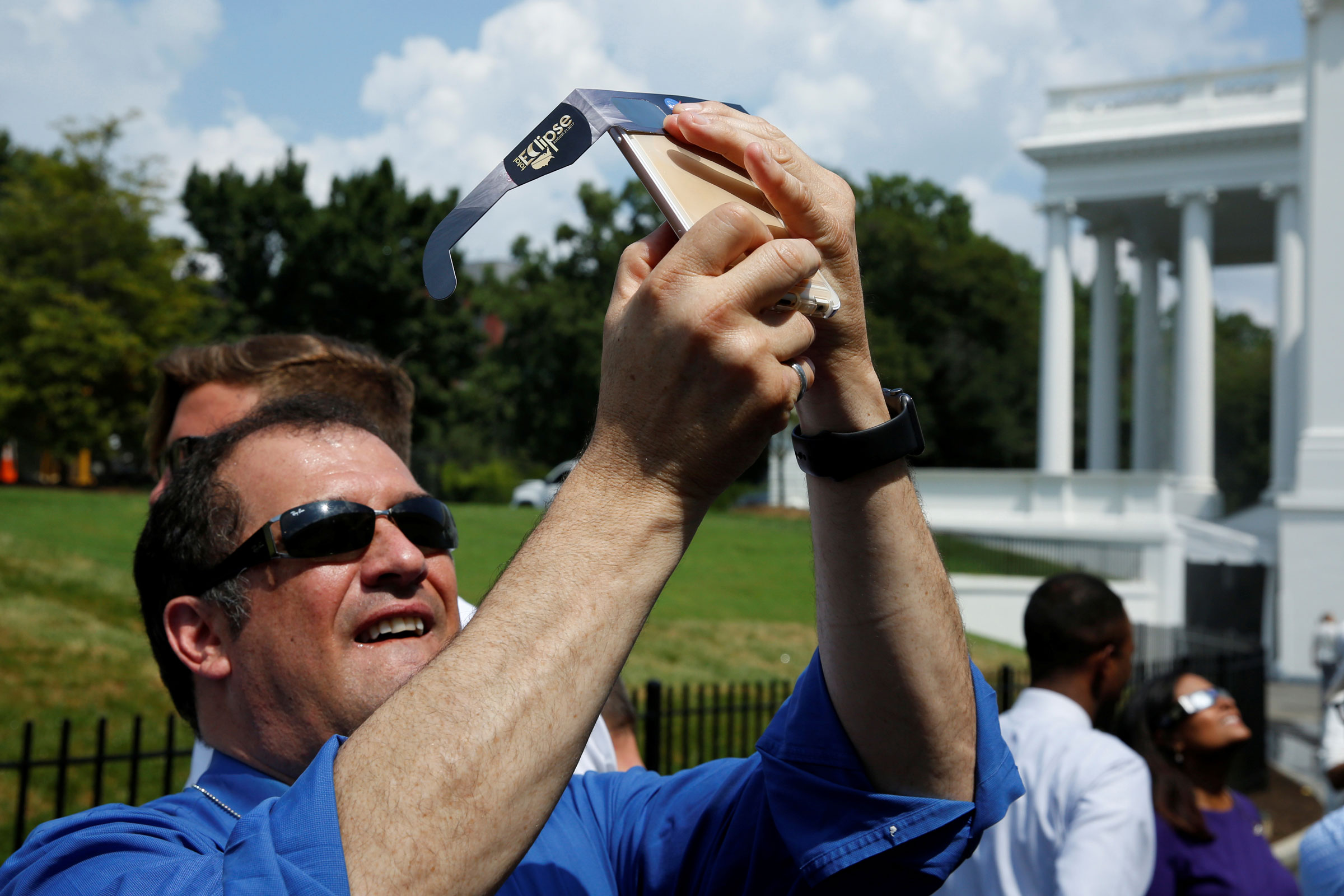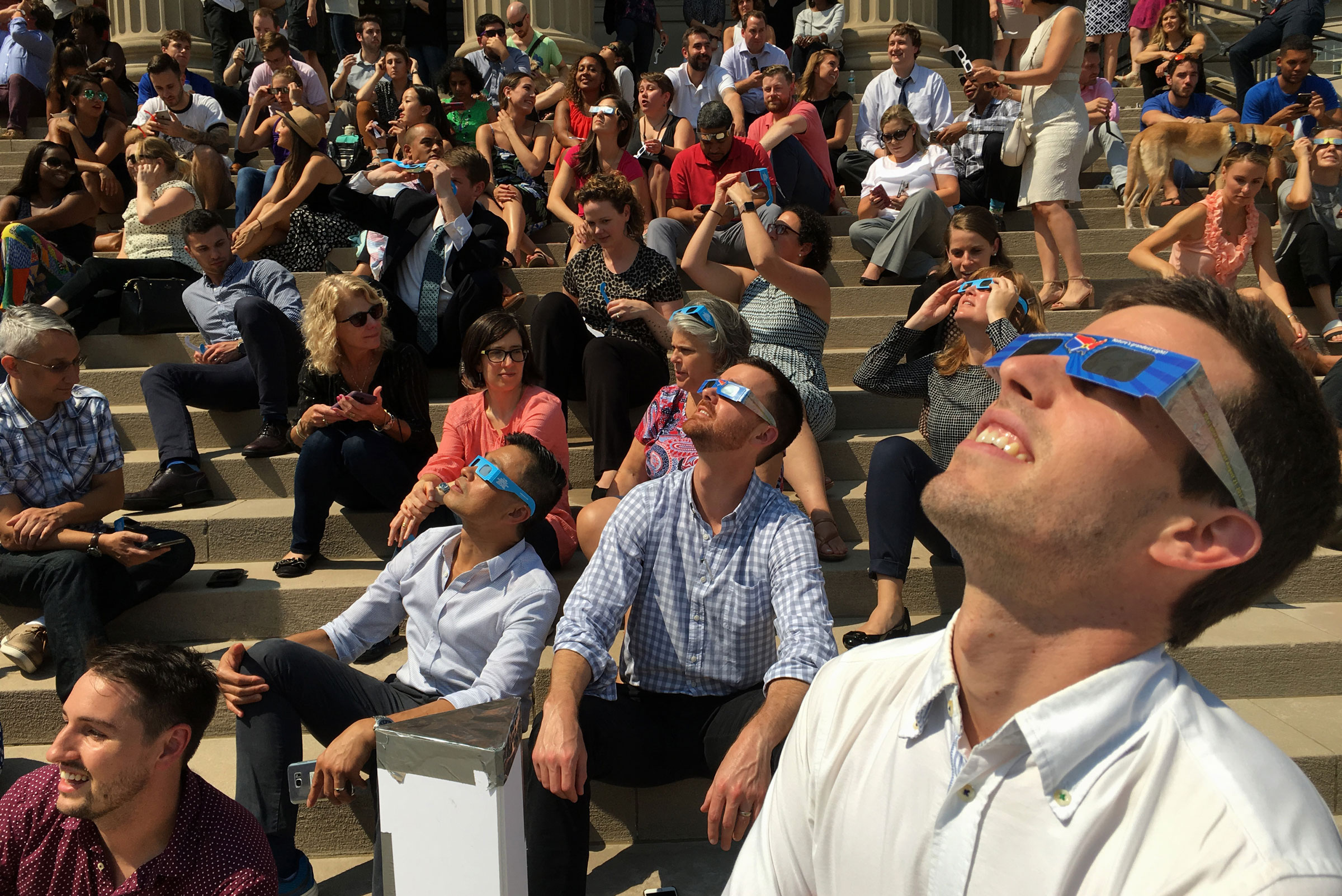
On Monday April 8, a total solar eclipse will pass across the U.S.. While the last solar eclipse visible from the U.S. occurred only seven years ago, it won’t be until 2045 that a total solar eclipse will pass again from coast to coast across the country.
Given that you might have to wait a couple decades for the next one, it might be worth taking a photo to capture the moment. While most of the eye-catching photos of total solar eclipses are taken with specialized cameras, smartphones can still do a reasonable job.
Read More: Here’s Where You Can See Every Total Solar Eclipse for the Next 50 Years
Here’s what to know about photographing the solar eclipse with a smartphone.
Use solar eclipse glasses
When viewing the eclipse, it’s imperative that you wear protective solar eclipse glasses to avoid eye damage from the sun’s light. You can also hold or tape the lens from a spare pair over your smartphone camera to prevent the light from damaging the lens, and to stop your shots from being overexposed.
If you’re in the thin track of land where the moon will fully cover the sun, known as the path of totality, you can take off your glasses. You should take the glasses off your smartphone camera then, too.
Read More: How to Find Solar Eclipse Glasses—and Spot Fake Ones

Set the focus and exposure
Most smartphone cameras automatically focus, but they often do a poor job. You can manually set the focus by tapping on the moon on your screen.
Most smartphones will also automatically set the exposure too, but again, you might want to manually tweak this. On an iPhone, after you tap to set the focus, a small sun icon will appear to the right of the focus box. Dragging this up and down will adjust the exposure. On an Android phone, after a long press on your desired focus point, dragging left and right adjusts the focus.
Use burst mode to capture the “diamond ring”
Just before the eclipse reaches totality and just after totality is ending, as one final bead of sunlight is visible, the bead combines with the thin ring around the rest of the moon to give the look of a “diamond ring.” This iconic image lasts for only a few seconds, so you might need to use burst mode to make sure you capture it.
Don’t zoom in too much
The sun will appear small in your photos, making it tempting to zoom in. Up to a point, this makes sense—most smartphones have a 2-5x optical zoom. But zooming in further than that just pixelates the image.
If you want to take close-up photos of the sun with your smartphone, consider purchasing a telephoto lens attachment. However, unless the attachment comes with a robust solar filter, be sure not to use the attachment before the sun is fully covered. Doing so would damage your smartphone lens.

Shoot your surroundings too
Because it can be hard to take a great photo of the eclipse with a smartphone, it is also worth taking photos that show your surroundings. A timelapse video of a group of eclipse-watchers with the sun in shot or a photo of people watching the eclipse staring upwards, for example, can capture the experience of observing the eclipse.
More Must-Reads from TIME
- Where Trump 2.0 Will Differ From 1.0
- How Elon Musk Became a Kingmaker
- The Power—And Limits—of Peer Support
- The 100 Must-Read Books of 2024
- Column: If Optimism Feels Ridiculous Now, Try Hope
- The Future of Climate Action Is Trade Policy
- FX’s Say Nothing Is the Must-Watch Political Thriller of 2024
- Merle Bombardieri Is Helping People Make the Baby Decision
Write to Will Henshall at [email protected]